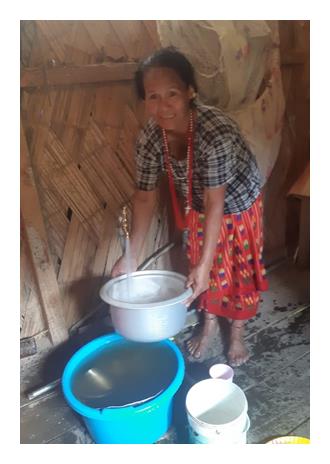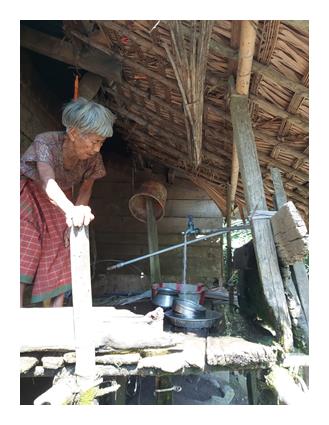Central Government has laid out the modalities for receipt of contributions/ grants from any person or institution for the purpose of disaster management in the National Disaster Response Fund (NDRF) as per Section 46(1)(b) of the Disaster Management (DM) Act, 2005. Accordingly, contributions/ grants can be made by any person or institution in NDRF through any of the following modes:
- Through physical instruments: to be drawn favoring “PAO (Secretariat), MHA” at New Delhi. On the back of the instrument, the individual may mention the remarks for “Contributions/ Grants to NDRF”.
- Through RTGS/ NEFT/ UPI: Contributions may also be made through RTGS/ NEFT indicating the purpose as “Contributions/ Grants to NDRF” and deposited in the Receipt Account No. 10314382194, IFSC Code- SBIN0000625, State Bank of India, Central Sectt Branch, New Delhi.
- Through Bharatkosh portal https://bharatkosh.gov.in using Net banking, Debit Cards, Credit Cards & UPI as per following steps:
- Click on “Quick Payment” option on the home page https://bharatkosh.gov.in
- On the next page, select the Ministry as “HOME AFFAIRS” and the Purpose as “Contributions/ Grants to NDRF” and the website would further guide for payment.

Contents shared By educratsweb.com
Serin, a quaint village at an altitude of 2,000 feet, nestled in the greens of Arunachal Pradesh has all the reasons to rejoice now. Accessing this small remote village is not an easy task. One has to trek minimum one day on foot to reach Serin, which is situated in Tamen – Raga block of Kamle district in the State. The terrain is tough here and so is the life of people. The distance between Serin village and its nearest Pucca road is 22 km. The village is inhabited by Nyishi tribe with a total population of 130. Their happiness knows no bound as every household is enabled with a tap connection now, ensuring potable water in their premises. Earlier, fetching water was a time taking and arduous task especially for the elderly people of Serin village as they had to fetch water from the nearby spring sources. But now thanks to the Serin water supply scheme, tap connections are available in every household.

Arunachal Pradesh Government has decided to provide 100% tap water connections to all the households in the State by 2023 under Jal Jeevan Mission, the flagship programme of Government, which aims to provide safe drinking water to all. It is the vision of the Prime Minister to bring improvements in the lives of people of the country, especially the rural people. The mission aims to change the lives of the people residing in rural area.
In hilly areas, it is a huge burden on the women of the household to go and fetch water from a distance, which takes heavy toll on their body. To reduce their drudgery, this mission has come as a boon and aims to provide potable water to every rural household in adequate quantity and of prescribed quality on regular and long-term basis. The States are required to train five persons especially women in every village for use of field test kits for testing of water supplied at local level.
It was an uphill task to implement Serin water supply project. Since the village is situated on top of the mountain, all the River Bed Materials like sand, shingles, boulders, etc., had to be collected from the rivers located far below the village. Besides, all the bulky materials like steel, cement, pipes, etc., had to be carried by head load from the nearest motorable road to worksite negotiating the tough terrains. High operation cost of the project, compounded by non-availability of skilled labourers locally increased the challenges manifold. But the work was meticulously planned and implemented by the PHE department.

Being a hilly State, gravity-based water supply system is used in Arunachal Pradesh, means the force of gravity is used to move the water downhill from a source to the village. An intake structure is built to collect the water from surface sources, which is then conveyed to the village through a pipe system. In the olden days, water treatment plants were not usually considered due to restrictive per capita cost norms. But now with the launch of Jal Jeevan Mission, water treatment plants are being made integral part of schemes to provide potable water of prescribed quality. Post treatment, water is collected in a clear water reservoir built above the village, from where water is distributed to FHTCs in the village by a distribution network of pipes. In order to facilitate equitable distribution of water, in larger villages, distribution tanks within the villages are provided.
Serin village is not a stand-alone example in the frontier State. Dalbing, another village located at an altitude of 3,300 feet in Upper Siang District with 79 households and population of about 380 people is an excellent example of community mobilisation. The village belonging to Adi tribe is situated on table top hillock. Since the Jal Jeevan Mission is a decentralized, demand-driven and community-managed water supply scheme, the natives of Dalbing village made community contribution in the form of labour. Similar works have been done in Upper Karko village which is a border block having international boundary. During the execution of work to provide FHTCs, the pipe and other construction materials were carried by the villagers. They had also assisted PHED in plumbing works.
Another village Pumao located at an altitude of about 3,900 feet in Longding District, which is the eastern most district of Arunachal Pradesh had toilets made under Swachh Bharat Mission, but villagers were reluctant to use them due to non- availability of running water supply. Now they are happily using the toilets as well after provision of water in their households.
The implementation of the Jal Jeevan Mission in these tough terrains and high altitude is a challenging task. Impediments increase with the harsh climatic conditions and poor connectivity. Equally challenging is to instil behavioural change in the villagers who are very reluctant to shun their beliefs and lifestyle. But the success stories of these villages are a proof of the better future envisioned by the Union Government to improve the lives of people especially the women.
https://pib.gov.in/PressReleasePage.aspx?PRID=1639611

Contents shared By educratsweb.com
India and the United States have announced new areas of research on transformational power generation based on supercritical CO2 (sCO2) power cycles and advanced coal technologies, including carbon capture, utilization, and storage (CCUS).
This emerged at a virtual ministerial meeting of the U.S.-India Strategic Energy Partnership (SEP) to review progress, highlight major accomplishments, and prioritize new areas for cooperation, on July 17, 2020. The meeting was co-chaired by U.S. Secretary of Energy Dan Brouillette and Indian Minister of Petroleum and Natural Gas and of Steel Shri Dharmendra Pradhan.
Besides, the US Secretary of Energy and India's Minister for Petroleum & Natural Gas & Steel, the virtual meeting was attended by U.S. Ambassador to India Kenneth I Juster, Indian Ambassador to the United States Taranjit Singh Sandhu and Secretary, Department of Science and Technology (DST) Prof Ashutosh Sharma along with other concerned officials.
Key points discussed
New areas of research on transformational power generation based on supercritical CO2 (sCO2) power cycles and advanced coal technologies, including carbon capture, utilization, and storage (CCUS) announced
Smart grids and energy storage is being implemented by consortium comprising of 30 Indian and US entities
Policy directions for the societal acceptance of smart grid concepts, Distributed Energy Resources, impact and value of the integrative solutions and emerging role of utilities as Distributed System Operators
Common priorities for collaboration evolved in Clean Coal Technologies, Supercritical Carbon Dioxide (sCO2) Power Cycles and Carbon Capture Utilisation & Storage (CCUS) technologies
Speaking on the occasion, Prof Ashutosh Sharma stated that the collaboration between India and United States has grown over the years under the Programme for Accelerating Clean Energy – Research (PACE-R). The ongoing collaboration on smart grids and energy storage is being implemented by consortium comprising of 30 Indian and US entities with investment of US $ 7.5 million each by India DST and US DoE (US Department of Energy) with matching amount provided by the consortium.
He added that this project addresses essential issues related to the adoption and deployment of smart grid concepts along with Distributed Energy Resources (DERs) including storage in the distribution network for its efficient and reliable operation and will also provide policy directions for the societal acceptance, impact and value of the integrative solutions and emerging role of utilities as Distributed System Operators.
Prof Sharma also added that the dialogue between US-DoE and India’s DST on clean coal technologies, Supercritical Carbon Dioxide (sCO2) Power Cycles and Carbon Capture Utilisation & Storage (CCUS) technologies has progressed well and common priorities for collaboration have been evolved. He also added that the one of the notable outcomes of the dialogue is participation of India in the multilateral platform for Accelerating CCUS Technologies (ACT) through which avenues have been generated for possible US- India collaboration.
The United States and India share an all-of-the-above approach to energy security and energy access. The two countries recognise the importance of Clean Energy Research, Development and Innovation and are also leading joint research and development (R&D) through the U.S.-India Partnership to Advance Clean Energy-Research (PACE-R) on smart grids and energy storage to increase resilience and reliability of the electric grid.
https://pib.gov.in/PressReleasePage.aspx?PRID=1639577

Contents shared By educratsweb.com
The Karnataka Common Entrance Test (KCET) admit cards have been released online by the Karnataka Examination Authority (KEA) on cetonline.karnataka.gov.in. The examination is scheduled to be held on 30 and 31 July.
The KCET 2020 was earlier slated to take place on 22 and 23 April but was postponed due to the COVID-19 pandemic. Students can download the Karnataka CET admit cards by 28 July.
The examination will be held across 129 exam centres, including the new 75 centres, set up in view of the ongoing coronavirus pandemic.
How to download KCET 2020 admit card
Step 1: Go to the official website of KCET 2020 kea.kar.nic.in.
Step 2: On the homepage, under Flash News tab click on UGCET 2020 Hallticket download link
Step 3: A new page will open where you will have to enter your application number, date of birth in DD/MM/YYYY format and press submit
Step 4: Your KCET 2020 admit card will be displayed on the screen
Step 5: Download and take a printout of it
Here's a direct link to download the admit card –
https://cetonline.karnataka.gov.in/ugcethallticket2020/frmAT.aspx
Contents shared By educratsweb.com
West Bengal 12th Results 2020 Live: West Bengal Council of Higher Secondary Education (WBCHSE) has declared the class 12th or Higher Secondary examination results. The WBCHSE President Mahua Das announced the results in a press conference today.Students can check their results at wbresults.nic.in. West Bengal has recorded the highest ever pass percent - 90.13. A total of 6.8 lakh students out of 7,61,583 have cleared the Uccha Madhyamik exam. This year WBCHSE will not release the merit list for class 12th exam. Boys have outperformed girls again this year. The pass percent of boys is 90.44 while the pass percent of girls is 90%.Kolkata has topped among the districts of Bengal followed by East Midnapore who stands at second position while West Midnapore has secured the third position. WBCHSE West Bengal will distribute its HS marksheets across 52 camps on July 31 from 2
The West Bengal class 12th results will also be available on wbresults.nic.in, exametc.com, results.shiksha, westbengal.shiksha, westbengalonline.in, jagranjosh.com, technoindiagroup.com, technoindiauniversity.ac.in, fastresults.in, and news18bangla.com.

How to check West Bengal 12th Results 2020
Visit the official website of WBCHSE at wbchse.nic.in
On the homepage, click on the link that reads, ‘West Bengal 12th Result 2020’
Key in your roll number and name to check your result
Your West Bengal 12th Result will be displayed on the screen
Download and take its print out.
Contents shared By educratsweb.com
if you want to share your story or article for our Blog please email us at educratsweb@gmail.com or Click here




0 Comments